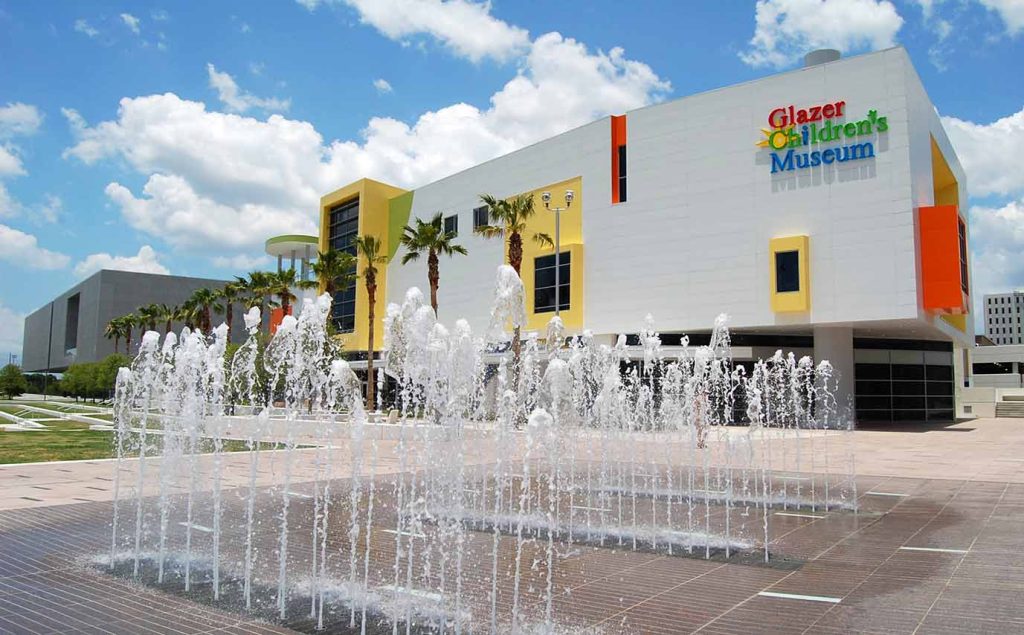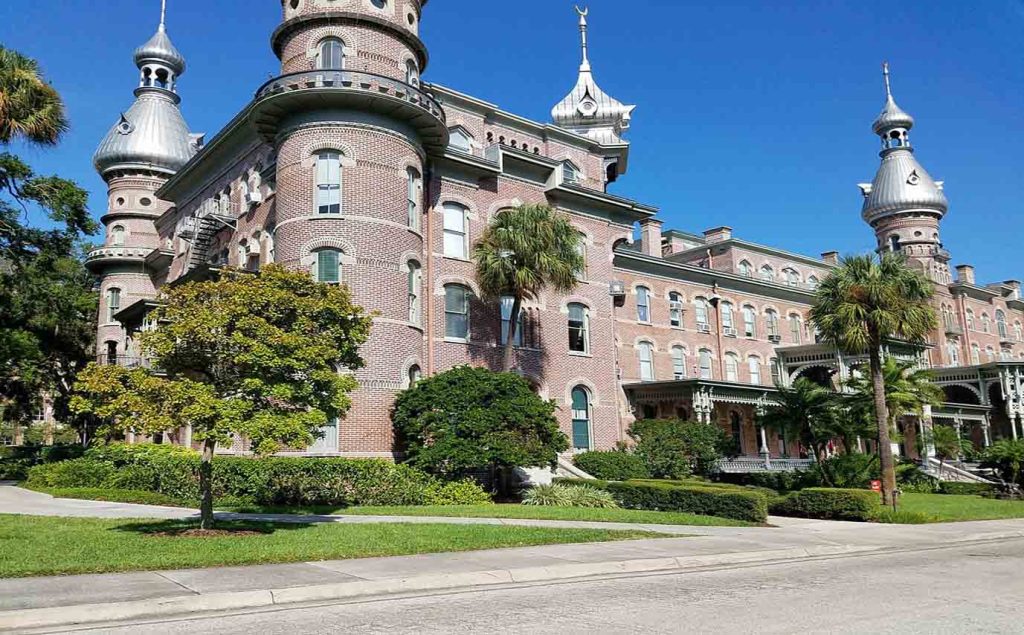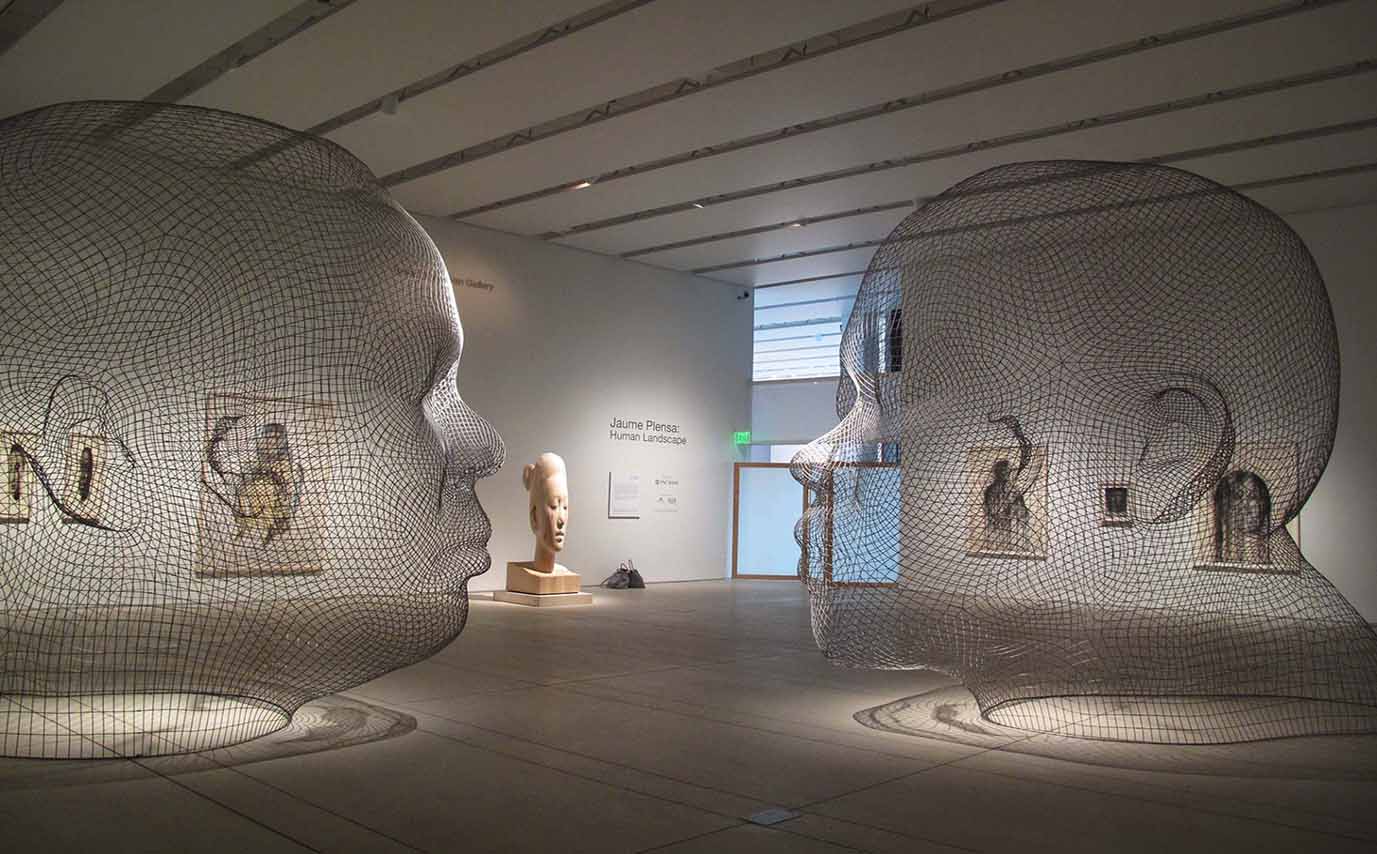Tampa, Florida, is more than just sun, beaches, and nightlife. Wandering through its streets, I discovered a thriving cultural heartbeat, a city where history, art, and creativity converge in spaces that feel both intimate and expansive. Over several days of exploration, I immersed myself in Tampa’s museums and art centers, uncovering stories, masterpieces, and experiences that left lasting impressions. Each visit was a chance to see the city through a lens of imagination, learning, and reflection.
1. Tampa Museum of Art
Location: 120 W Gasparilla Plaza, Tampa, FL 33602
My first stop in downtown Tampa was the Tampa Museum of Art, situated gracefully along the scenic Riverwalk. As I approached the building, its sleek, glass-fronted architecture immediately caught my eye, reflecting the sunlight and the rippling waters of the Hillsborough River. The exterior itself felt like a modern sculpture, a promise of the creative treasures housed within. Walking through the entrance, I was welcomed by a bright, airy lobby, where polished floors, minimalist design, and strategically placed sculptures created a sense of calm anticipation. The museum staff greeted me warmly, providing a detailed map and highlighting the exhibitions not to be missed during my visit.
Highlights & Must-Sees
- Greek and Roman Antiquities – The museum’s classical collection transported me centuries back in time. Marble busts of historical figures stood elegantly on pedestals, while intricately carved amphorae and vases revealed the meticulous craftsmanship of ancient artisans. The textures, colors, and subtle imperfections in these pieces made me marvel at the skill of cultures long past. I spent significant time observing each piece, capturing photographs that emphasized the play of light across the marble and clay surfaces.
- Contemporary Art Galleries – The transition from antiquity to contemporary works was striking. Abstract canvases with bold colors and dynamic brush strokes provoked thought and discussion, while immersive multimedia installations allowed me to interact with sound and light. One installation in particular responded to my movements, creating a visual dialogue that felt both playful and profound.
- Interactive Installations – Digital exhibits allowed me to manipulate projected images, experiment with virtual brushes, and even create small pieces of art that were displayed temporarily for visitors to see. These hands-on experiences made the museum feel alive and encouraged me to engage more deeply than a traditional passive viewing would have allowed.
Costs & Booking
- Adult Admission: \$15
- Seniors: \$10
- Children under 12: Free
- Tickets available via Tampa Museum of Art
Spending hours here, I discovered quiet corners perfect for reflection, particularly the rooftop terrace. Sitting with a cup of coffee, I enjoyed sweeping views of the Riverwalk below, watching joggers, cyclists, and families enjoy the riverfront. The sunlight shimmered on the water, casting reflections onto the museum’s glass walls, which made photographing both the interior and exterior a delightful challenge.
Tips
- Arrive early to enjoy quieter galleries, optimal lighting for photography, and a more personal experience with the exhibits.
- Pair your museum visit with a walk along the Riverwalk, combining art, nature, and urban scenery.
- Wear comfortable shoes, as the museum and surrounding areas involve considerable walking, and consider carrying a small backpack for water, sunscreen, and a notebook to jot down thoughts or sketch inspirations.
Exploring the Tampa Museum of Art was not just a visual journey but a sensory one—where architecture, natural light, and curated collections harmonized to create an immersive cultural experience.
2. Glazer Children’s Museum
Location: 110 W Gasparilla Plaza, Tampa, FL 33602
Just a short stroll from the Tampa Museum of Art, the Glazer Children’s Museum offers a completely different kind of adventure. From the moment I walked through the doors, I was struck by the vibrant colors, whimsical designs, and the energy that seemed to radiate from every corner. Children of all ages darted from exhibit to exhibit, their laughter and exclamations filling the air, while parents moved alongside them, guiding, observing, and sometimes joining in the fun. Even as an adult, I found the museum’s playful and educational approach captivating.

Highlights
- Water Play and Engineering Exhibits – One of the first areas I explored involved interactive water tables where kids could manipulate pumps, dams, and levers. Watching children experiment with cause-and-effect and teamwork was mesmerizing. I even found myself trying to redirect water through miniature channels, feeling surprisingly engaged by the hands-on engineering challenges.
- Creative Arts Studio – The museum’s art studio offers painting, sculpting, and crafting stations with a variety of materials. I watched children lose themselves in imaginative projects, mixing colors and textures. Some parents joined in, creating shared experiences that encouraged creativity and bonding.
- Cultural Exploration Areas – Exhibits that highlight local history, global cultures, and different community roles help children understand the world around them. Interactive displays allowed kids to “run” a market, try on cultural attire, and engage in storytelling, making learning playful and memorable.
Costs & Booking
- General Admission: \$12–\$15 per child
- Adults: \$10
- Tickets can be booked in advance via Glazer Children’s Museum
I spent several hours moving from one section to another, observing families collaborate on problem-solving activities. Even without children, I appreciated the ingenuity behind many of the exhibits—particularly the engineering challenges that were both fun and educational.
Tips
- Arrive at opening to enjoy quieter play areas and shorter lines.
- Bring a reusable water bottle; hands-on activities and running around can quickly lead to thirst.
- Photography is welcomed, but always be mindful of other families’ privacy.
- Consider pairing a visit here with the Tampa Museum of Art for a full day of cultural and educational exploration along the Riverwalk.
The Glazer Children’s Museum brilliantly balances fun and learning, making it a must-visit for families, educators, or anyone with a curiosity for interactive experiences.
3. Henry B. Plant Museum
Location: 401 W Kennedy Blvd, Tampa, FL 33606
For a journey back to Tampa’s Gilded Age, the Henry B. Plant Museum, housed in the opulent Plant Hall at the University of Tampa, was unforgettable. Its Moorish-style architecture—complete with minarets and arches—felt like stepping into another world.
Highlights
- Historical Rooms and Exhibits – Victorian furniture, artwork, and original furnishings tell the story of the hotel’s 1891 heyday.
- Guided Tours – Knowledgeable docents provide rich narratives about Tampa’s development and the hotel’s illustrious guests.
- Photography Opportunities – The intricate details, stained glass, and grand staircases make for striking photos.
Costs & Booking
- Adults: \$10
- Seniors & Students: \$8
- Children under 6: Free
- Tickets can be booked via Henry B. Plant Museum
I wandered slowly through the museum, imagining lavish parties and historical events, capturing photos of ornate ceilings and period furnishings. The museum’s proximity to the University of Tampa campus also allows for a scenic walk in the surrounding area.
Tips
- Check tour schedules; guided tours offer deeper insights than self-guided visits.
- Combine your museum visit with a Riverwalk walk to connect historical and contemporary Tampa.
4. Tampa Bay History Center
Location: 801 Old Water St, Tampa, FL 33602
The Tampa Bay History Center is an expansive museum celebrating the region’s indigenous heritage, colonial history, and cultural evolution. Walking through its exhibits, I felt a narrative thread connecting past to present.
Highlights
- Pirates of Tampa Bay Exhibit – Engaging stories of maritime adventures and shipwrecks.
- Interactive Exploration Zones – Hands-on displays encourage learning through touch and play.
- Florida’s Cultural Heritage Exhibits – From Seminole traditions to Spanish settlers, the museum offers rich contextual understanding.
Costs & Booking
- Adults: \$14.95
- Seniors & Students: \$12.95
- Children under 5: Free
- Tickets available via Tampa Bay History Center
I spent several hours exploring, captivated by the combination of digital installations and physical artifacts. The museum café serves light meals and beverages, perfect for a midday break.
Tips
- Weekdays are quieter; plan your visit for better interaction with exhibits.
- Use Expedia or Booking.com to book nearby downtown hotels for convenience.

5. Straz Center for the Performing Arts
Location: 1010 N W C St, Tampa, FL 33602
While primarily a performing arts venue, the Straz Center also hosts art exhibitions, educational programs, and behind-the-scenes tours. I attended a daytime tour and gained insight into theater production, set design, and local arts initiatives.
Highlights
- Theater Tours – Learn about stages, rehearsal spaces, and technical setups.
- Art Exhibitions – Rotating galleries display local and regional artists.
- Educational Workshops – Programs in dance, music, and drama enrich the community.
Costs & Booking
- Theater tours: \$10–\$15
- Performance tickets vary by show; book via Straz Center
I found the interactive workshops particularly rewarding, as they allowed visitors to experience aspects of stagecraft firsthand.
Tips
- Check performance schedules online and combine a tour with an evening show.
- For hotel and flight bookings, platforms like Kayak, Expedia, and Hotels.com offer packages that include local attractions.
Additional Museums and Art Spaces
- Museum of Science & Industry (MOSI) – Hands-on science exhibits, planetarium, and interactive displays.
- Florida Museum of Photographic Arts – Rotating photography exhibitions capturing Tampa’s past and present.
- Tampa Theatre – Historic movie palace featuring film screenings, special events, and art exhibitions.
Visiting Tips Across Tampa’s Museums
- Book tickets in advance online for special exhibitions.
- Wear comfortable clothing and shoes; many museums are large and involve walking.
- Combine museums with nearby attractions—cafés, parks, and Riverwalk paths enhance the experience.
- Consider using Google Flights, Expedia, or Kayak to find flights and rental packages.
- Use Booking.com or Hotels.com to secure downtown accommodations for easy access to multiple museums.
- Dining reservations can be made via OpenTable to pair meals with cultural exploration.
Personal Reflections
Exploring Tampa’s museums and art centers revealed the city’s multifaceted identity. From contemporary art at the Tampa Museum of Art to the historical richness of the Henry B. Plant Museum, each visit was immersive. Walking along the Riverwalk, pausing between galleries, and capturing the city’s interplay of water, light, and culture, I felt a deep connection to Tampa’s spirit. The museums are not isolated cultural spots; they are integrated into the rhythm of the city, inviting exploration, reflection, and engagement.


